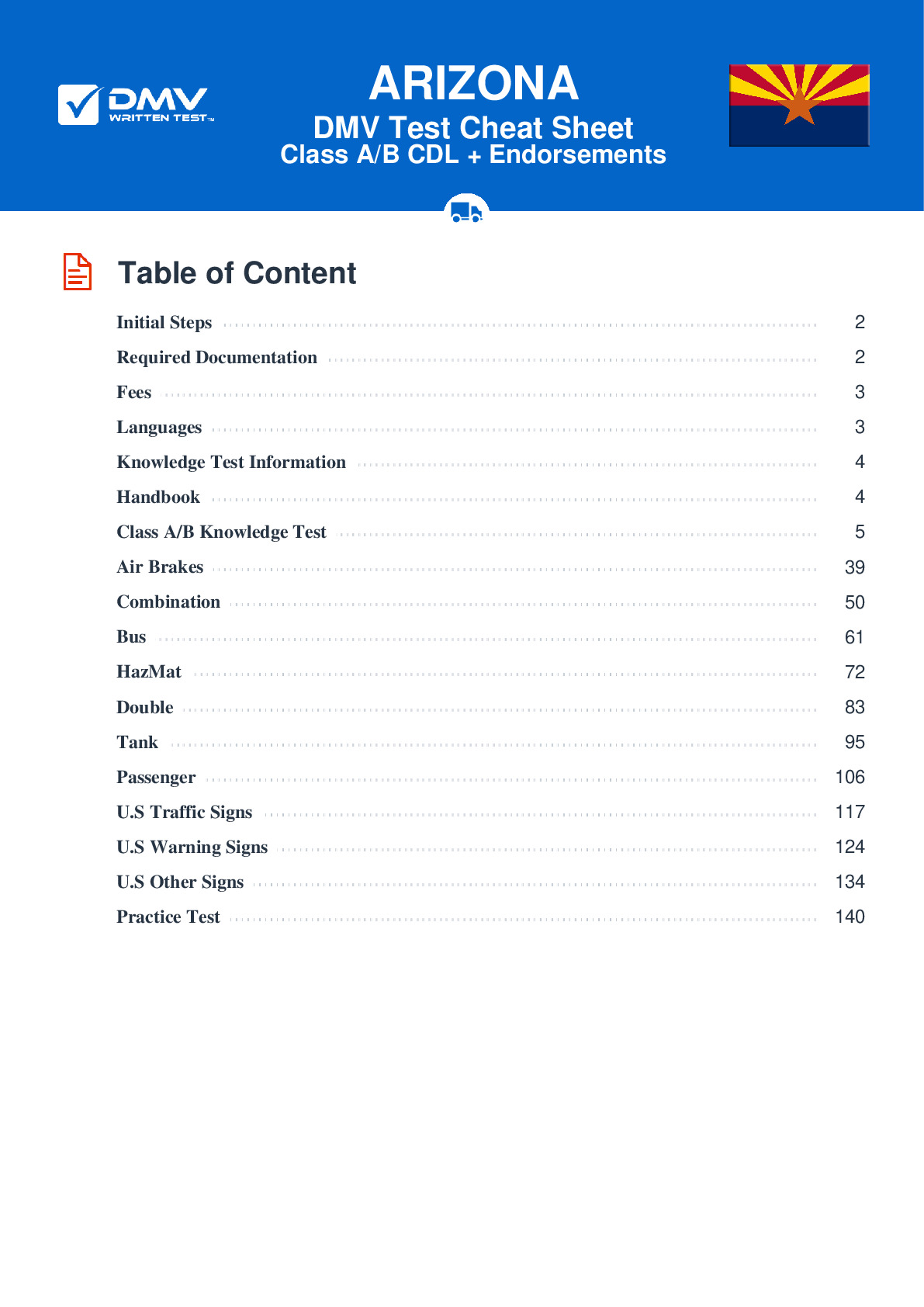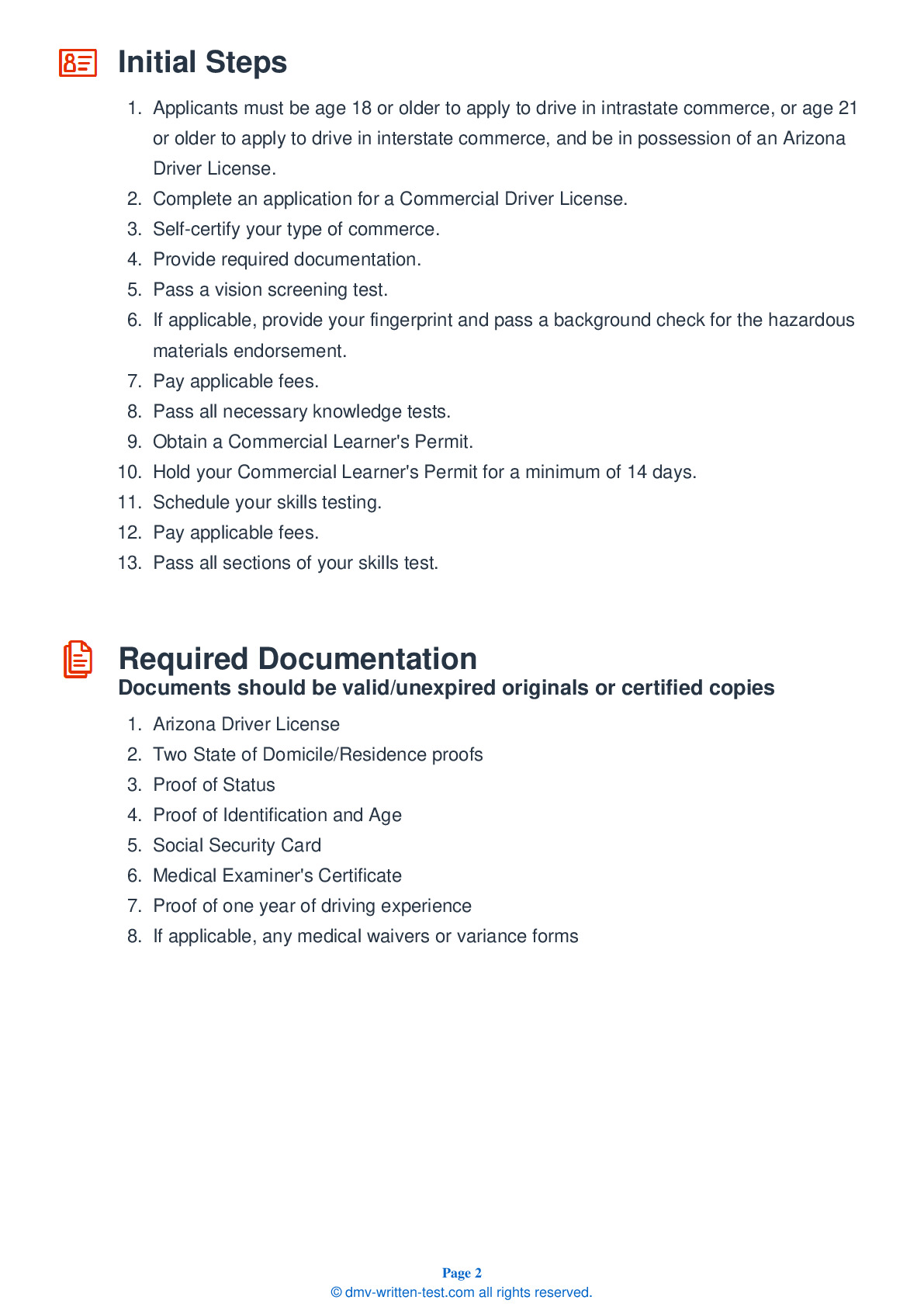Air Brakes
This endorsement is required for driving a vehicle with air brakes. To receive this endorsement, applicants must pass a written test. The test consists of 25 multiple choice questions. Each question has three answer choices. To pass, the applicant must answer at least 20 questions correctly. Test questions come from the Arizona Commercial Driver License Manual. Questions come from the chapter covering: Air Brakes. The Air Brakes endorsement may be used with the Class A, B or C CDL.
Number of Question
Passing Score
7. How much distance will an air brake-equipped vehicle need to come to a complete stop if it is traveling at 55 mph under ideal driving conditions?
Explanation
A vehicle's total stopping distance is made up of perception distance, reaction distance, brake lag distance, and braking distance. With all of these factors included, an air brake-equipped vehicle traveling at a speed of 55 mph under ideal driving conditions will need approximately 450 feet to come to a complete stop.
8. Why should you regularly drain the air tanks?
Explanation
Compressed air usually contains a certain amount of moisture and compressor oil, which can build up in the air storage tanks and damage the brake system. The tanks should be drained to clean out these accumulations. On a tank with a manual drain valve, draining should be performed at the end of each day of driving.
9. If the safety relief valve in the air brake system releases air:
Explanation
An air brake system has a safety relief valve, which releases air from the tanks if the pressure gets too high. If the valve must operate, something in the system is wrong and should be addressed by a mechanic.
10. A low air pressure warning signal should activate:
Explanation
In an air brake system, a low air pressure warning signal must come on if air pressure in the tanks falls below 60 psi. This warning signal may come in the form of a light, a buzzer, or a wig wag.
11. When parked on a flat surface, you should:
Explanation
When parking on a level surface, you should use wheel chocks. If the vehicle is not equipped with spring brakes, this is essential to prevent the trailer from moving.
12. Air brakes use ____ to function.
Explanation




